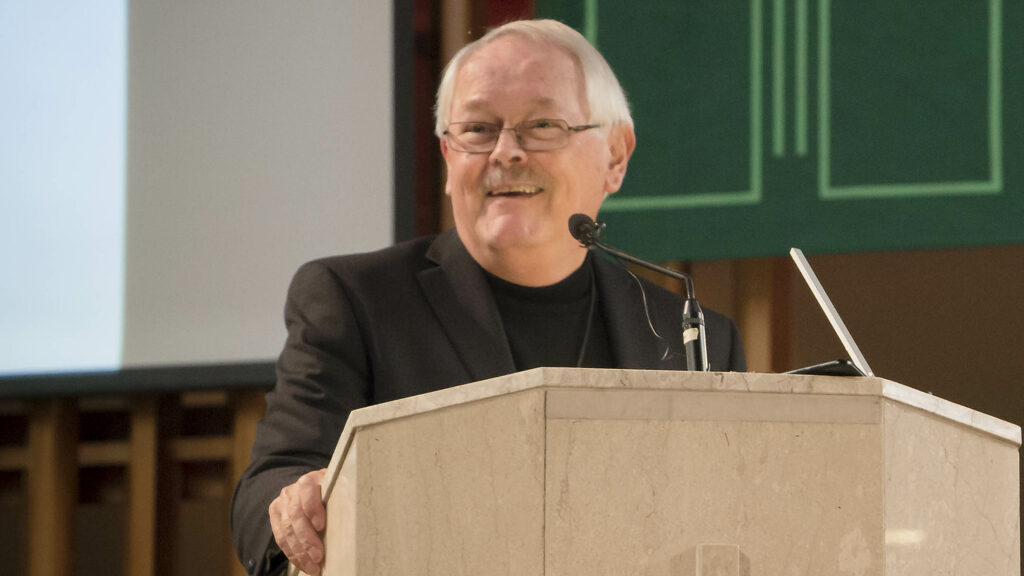Rev. Ron Rolheiser
In the world of the arts, they make a distinction between persons who create an artifact, an artist, a sculptor, or a novelist, and persons who write about artists and their works. We have novelists and literary critics, artists and art critics, and both are important. Critics keep art and literature from bad form, sentimentality, vulgarity, and kitsch; but it’s the artists and novelists who produce the substance; without them critical assessment has no function.
For example, the book The Diary of Anne Frank is a masterpiece. Countless books and articles have been written about it, but these are not the masterpiece, the substance, the artifact that so deeply touched the soul of millions. They are commentaries about the artifact. Of course, sometimes a person can be both, a novelist and a literary critic, an artist and an art critic, still the distinction holds. These are separate crafts and separate disciplines.
That same distinction holds true within the area of theology and spirituality, though it is often not recognized. Some people write theology and others write about theology, just as some people write spirituality and others write about spirituality. Right now, I’m writing about theology and spirituality rather than actually doing theology or spirituality.
Perhaps an example can help. Henri Nouwen was one of the most popular spiritual writers in the past seventy years. Nouwen wrote spirituality; he never wrote about it, he wrote it. He was not a critic; he wrote spiritual texts. Many people, including myself, have written about Nouwen, about his life, his works, and why he influenced so many people. Strictly speaking, that’s writing about spirituality as opposed to writing spirituality as Nouwen did. Truth be told, we don’t have an abundance of spiritual writers today the caliber of Nouwen. What we do have, particularly at an academic level, is an abundance of critical writings about spirituality.
I offered the example of a contemporary spirituality writer, Henri Nouwen, but the distinction is perhaps even clearer when we look at classical spiritual writers. We have in fact created a certain “canon” of spirituality writers whom we deem as classics: the Desert Fathers and Mothers, the Pseudo-Dionysius, Julian of Norwich, Nicholas of Cusa, Francis of Assisi, Dominic, Ignatius, John of the Cross, Theresa of Avila, Francis de Sales, Vincent de Paul, and Therese of Lisieux, among others. None of these wrote works of criticism in se, they wrote spirituality. Countless books have been written about each of them, critically assessing their works. As valuable as these books are, they are in the end not spirituality books, but books about spirituality.
The same is true for theology. We have infinitely more books written about theology than we have books that are actual theology. The word “theology” comes from two Greek words, Theos (God) and logos (word). Hence, in essence, theology is “words about God”. Most theology books and courses on theology contain some “words about God”, but these are generally dwarfed by “words about words about God.”
This is not a criticism, but a clarification. I have taught and written in the area of theology and spirituality for nearly 50 years and am blissfully unaware of this distinction most of the time, mainly because we need both and the two simply flow in and out of each other. However, there is a point where it becomes important not to confuse or conflate the critical assessment of an artifact with the artifact itself, and in our case to recognize that writing about theology and spirituality is not the same thing as actually doing theology and doing spirituality. Why? Why highlight this distinction?
Because we need the artist and the critic to speak to different places inside of us and we need to recognize (explicitly at times) where we need to be fed or guided. The artist speaks to the soul with one kind of intent, namely, to inspire, to inflame, to deepen, to bring new insight, and to move us affectively. The critic speaks with a different intent: to guide, to keep us balanced, sane, robust, clear-headed, and within the bounds of decency, community, proper aesthetics, and orthodoxy. Both are important. One saves the other from unbridled sentimentality and the other saves the other from simply being an empty exercise. In a vast over-simplification, we might put it this way. Critics define the rules of the game and hold the players to the rule; but art, theology, and spirituality are the game. Games need to be refereed or they quickly degenerate.
In our churches today there is often a tension between those who are trying to create new insight, generate new enthusiasm, and speak more affectively to the soul, and those who are guarding the castles of academia, orthodoxy, liturgy, and good taste. Academic theology is often in tension with devotional life, liturgists are often in tension with pastors, and popular spiritual writers are often in tension with critics. One or the other may irritate us, but each is ultimately a friend.

